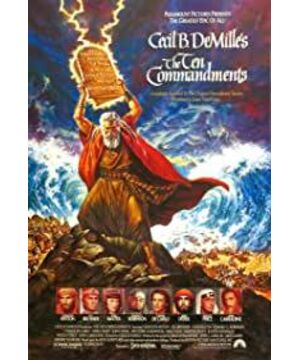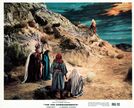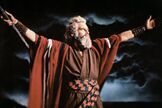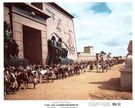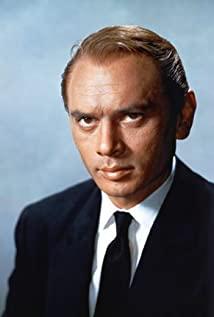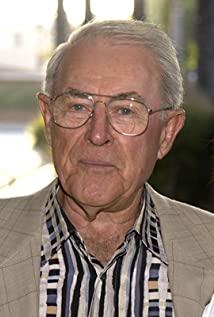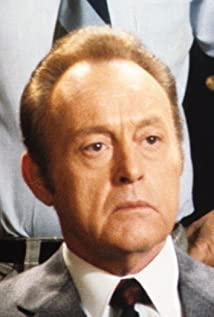Xixi Dimir (1881~1959) is an international film master, especially Hollywood's most famous "Bible" theme film director. In 1923, he filmed the black and white silent film "The Ten Commandments", which intertwined the story of the Israelites out of Egypt in the "Bible" and the story of modern people's violation of the philosophical laws, which caused a great sensation. Dimir himself is a devout Christian. But as a film artist, since then, he has insisted that shooting "Bible-themed movies" should not only promote the doctrines of the Bible, but more importantly, through spectacular sights, vivid characters, and dramatic plots. And the film-like composition, to show the sins of mankind and the necessity of souls to be saved. In 1927, he filmed the dubbing film "The King of Kings", telling the story of Jesus Christ by means of film. Many viewers became Christians because of watching this film, accepting Jesus Christ as their Savior. In 1932, he filmed the film "The Sign of the Cross" reflecting the early history of Christianity; in 1956, he filmed "The Ten Commandments". classic work.
The film "The Ten Commandments" is faithful to the theme of the "Bible", focusing on the background and meaning of the "Ten Commandments", but it is not limited to the description of the Jews exodus from Egypt in the "Bible". In order to show the life and achievements of Moses more completely, the creator also referred to relevant materials in Howard Fast's novel "The Biography of Prince Moses of Egypt". The main features of the film are its majestic scenes, rigorously structured narratives, historical costume props, amazing special effects, vivid and lifelike performances, music and sound that blend in with the pictures, and sharply rhythmic editing, etc. Wait. These achievements made it a hot topic in the Oscar competition that year, and it also caused a sensation in the international film scene.
In addition to the famous passages such as "The Great Migration" and "Crossing the Red Sea", in the scene of the construction of a huge city by the Jewish slave army, the tall walls, the huge stone mills and the tiny figures form a very sharp contrast. When the old woman was nearly crushed to death, this contrast and rapid editing created a strong dramatic tension, allowing the audience to participate in the plot, breathing with the characters and sharing fate. This method of contrast also played a rhetorical role in the film language in shaping the image of Moses. When Moses grew up, he participated in the ascension ceremony of the Pharaoh as a prince, and was applauded by everyone including the Pharaoh. The whole scene was full of vitality, bright colors, and fascinating. In the passage in which he was brought to the palace of the Pharaoh for his identity and homicide, the whip and the opening of the door were linked together; he was insulted in the palace, and the whole scene was low-toned, tense and heavy. Worry. In the passages showing Egypt, Demir not only rendered the grandeur of the scene, but also interspersed many vivid details, such as duck pecking, children driving chickens, birth of newborns, etc., to express the hardships of life and the pursuit of freedom. significance.
The last paragraph of the film has an epic charm: the Jews have experienced more than 40 years of ordeal in the Sinai Desert, and finally saw their future hometown-a land with green mountains and green water under the blue sky in the distance, a place that God had promised long ago. . At this moment Moses stopped and slowly climbed up a hill, watching his people affectionately towards their new homeland. His standing image is like a marble sculpture, recording the vicissitudes of the Jews over the centuries, allowing people to see the accumulation of history and the new beginning of human civilization. The exhortation of "passing down the "Bible" from generation to generation and striving for freedom" blended with the sound of strong music and the backs of people who walked into the distance in the big vision, making people immersed in the vortex of history and reality, to remember In the past, looking forward to the future. At this time, two large lines were printed on the screen: "The Ten Commandments have already been written, and the law must be fulfilled."
The image of Moses is the key to the success of the film. Based on the image modeling of Michelangelo’s famous sculpture "Moses", Dimir chose Charlton Heston (later won the Oscar for Best Actor for playing the protagonist of "Benxu") as the Jewish leader And the prophet Moses. Heston had previously worked as a pilot and acted in dramas and movies. He has a strong physique, handsome face and considerable artistic experience. In order to play this role well, Heston immersed himself in studying the "Bible". Like the protagonist Moses did 3000 years ago, he memorized the "Pentateuch" (the first five books of the Bible), repeatedly trying to figure out the inner world of the characters, and Walking barefoot through the stone roads and deserts of Mount Sinai, experiencing the experiences and feelings of the characters, thus creating an artistic image of a living prophet Moses, which is universally recognized. The "bald star" Yul Brenner, who is familiar to Chinese audiences, first played the role of the Egyptian prince Ramses and then the Egyptian pharaoh. He also completed the role creation with a rigorous attitude and profound artistic accomplishment, which was generally praised.
In order to achieve realistic screen effects, the 75-year-old Dimir and his creative team built a tall and majestic ancient city in Egypt. The huge reliefs on the city wall, the squatting stone lions on both sides of the city gate, the towering sphinx sculptures on both sides of the avenue outside the city shown in the film, as well as the huge stone mills and crowded labor scenes during the construction of the city, are easy to make People think of the complicated dialectical relationship between civilization and cruelty. They also went deep into the mountains and deserts of Egypt's Sinai Peninsula to take real-life photos of the tragic historical scenes of the Jews when they left Egypt. In filming this passage, Dimir used more than 12,000 people and more than 15,000 livestock, and the marching team was 3 miles long. In order to capture the climax of the Egyptian soldiers chasing after the Jews in chariots, Dimir hired thousands of Egyptian soldiers and trained them for four months, so that they had the necessary skills and resembled the image of the time. One day during the filming process, Dimir climbed up a 100-foot ladder to command the mobilization. He suddenly felt chest pain. When he got down to the ground, he was exhausted. The doctor discovered that he was suffering from a serious heart disease and asked him to choose between the film and his own survival. He prayed repeatedly all night, and returned to the shooting scene the next day, completing the filming task with amazing perseverance. His film talent and perseverance have always been respected by people.
"To put the "Bible" story on the screen is to be honest, and not to deceive yourself." This may be one of the secrets of Dmir's success. After the film was completed, he never made a new film. In 1959, he died in New York, ending his 45-year film career. But he has left more than 50 feature films for human civilization, including his "Bible" theme film, especially this huge film that will last forever in film history-"The Ten Commandments".
View more about The Ten Commandments reviews


